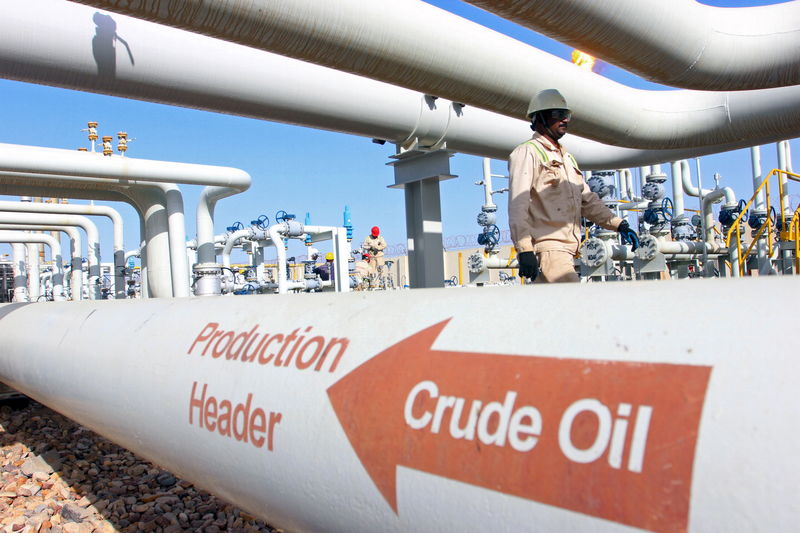* OPEC, non-OPEC ministers to meet in Algeria on Sunday
* Geopolitical risk supports prices after Russian plane downed
* Market watching U.S.-China trade war impact on oil demand
* U.S. crude oil stocks rise 1.2 mln bbls last week -API (Adds API data on U.S. crude stockpiles in paragraphs 4, 5)
By Stephanie Kelly
NEW YORK, Sept 18 (Reuters) - Oil futures rose more than 1 percent on Tuesday on signs that OPEC would not be prepared to raise output to address shrinking supplies from Iran, and as Saudi Arabia signaled an informal target near current levels.
Brent crude LCOc1 futures rose 98 cents, or 1.3 percent, to settle at $79.03 a barrel.
U.S. West Texas Intermediate (WTI) crude CLc1 gained 94 cents to settle at $69.85 a barrel, a 1.4 percent increase.
Prices pared gains in post-settlement trade after data from industry group the American Petroleum Institute showed U.S. crude inventories rose by 1.2 million barrels in the week to Sept. 14 to 397.1 million, compared with analysts' expectations for a decrease of 2.7 million barrels. U.S. government data is due to be released on Wednesday.
Ministers from the Organization of the Petroleum Exporting Countries and non-OPEC producers meet on Sunday to discuss compliance with output policies. OPEC sources have told Reuters no immediate action was planned and producers would discuss how to share a previously agreed output increase. reported on Tuesday, citing unnamed Saudi sources, that the kingdom was currently comfortable with prices above $80 per barrel, at least for the short term.
Bloomberg reported that while Saudi Arabia had no desire to push prices higher than $80, it may no longer be possible to avoid it. U.S. sanctions affecting Iran's petroleum sector are due to come into force from Nov. 4.
Reuters previously reported that Saudi Arabia wants oil to stay between $70 and $80 a barrel for now, as the world's biggest crude exporter strikes a balance between maximizing revenue and keeping a lid on prices until U.S. congressional elections. Energy Minister Alexander Novak said an oil price between $70 and $80 was temporary and sanctions-driven, adding the long-term price would stand around $50 a barrel. Energy Secretary Rick Perry said last week in Moscow that he did not foresee any price spikes once sanctions came into effect, and was positive about Saudi output. futures also drew support from geopolitical risk on Tuesday.
Russia's Defense Ministry said a Russian military plane was shot down by Syrian anti-aircraft systems, but accused Israel of indirectly causing the incident, saying Israeli jets nearby had put the Russian plane in the path of danger. has told Israel it will take all necessary measures to protect its military personnel in Syria, the Foreign Ministry in Moscow said. WAR CAPS GAINS
The longer-term outlook remains weighed down, however, by an escalation in the China-U.S. trade war that has clouded the outlook for crude demand.
China, one of the world's largest oil consumers, on Tuesday added $60 billion of U.S. products to its import tariff list. The move was in retaliation for President Donald Trump's planned levies on $200 billion worth of Chinese goods. Monday, the Trump administration said it would begin to levy new tariffs of 10 percent on about $200 billion of Chinese products next Monday, with the tariffs to go up to 25 percent by the end of 2018. tariffs are likely to limit economic activity in both China and the United States.
"The brinkmanship between Beijing and Washington has the potential to severely impact the competitiveness of U.S. crude oil and petroleum products in the Chinese market, and it will also deter Chinese investment in the U.S. energy sector," said Abhishek Kumar, senior energy analyst at Interfax Energy in London.
